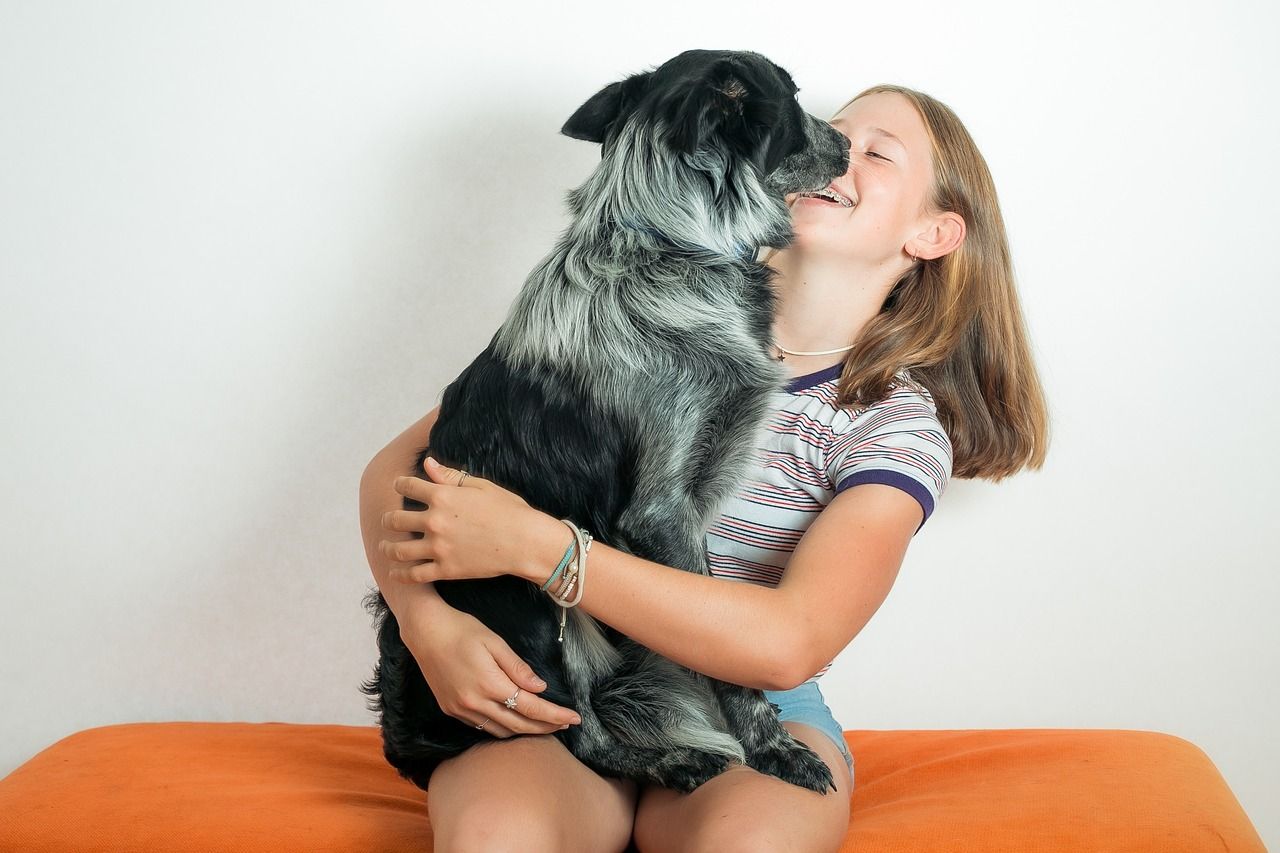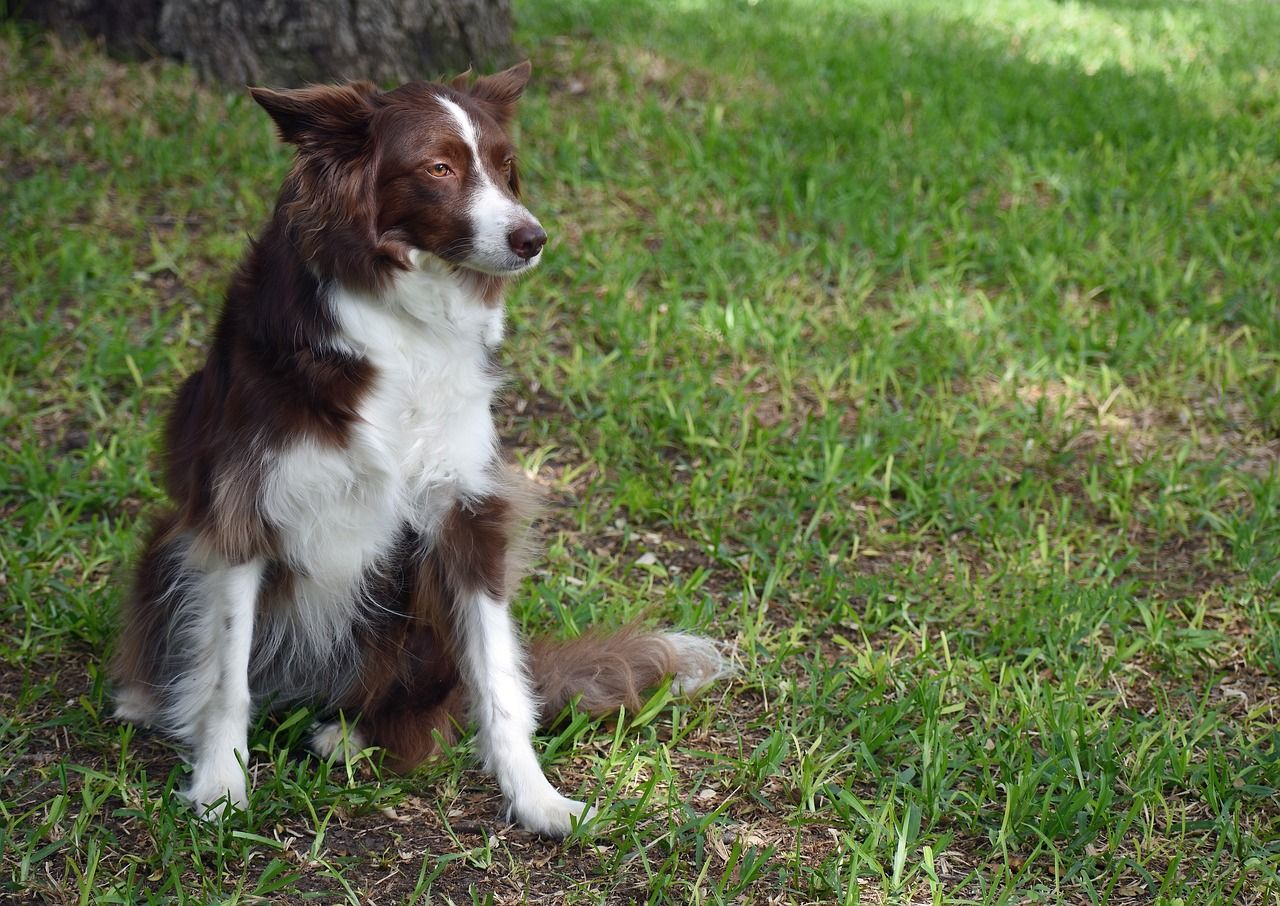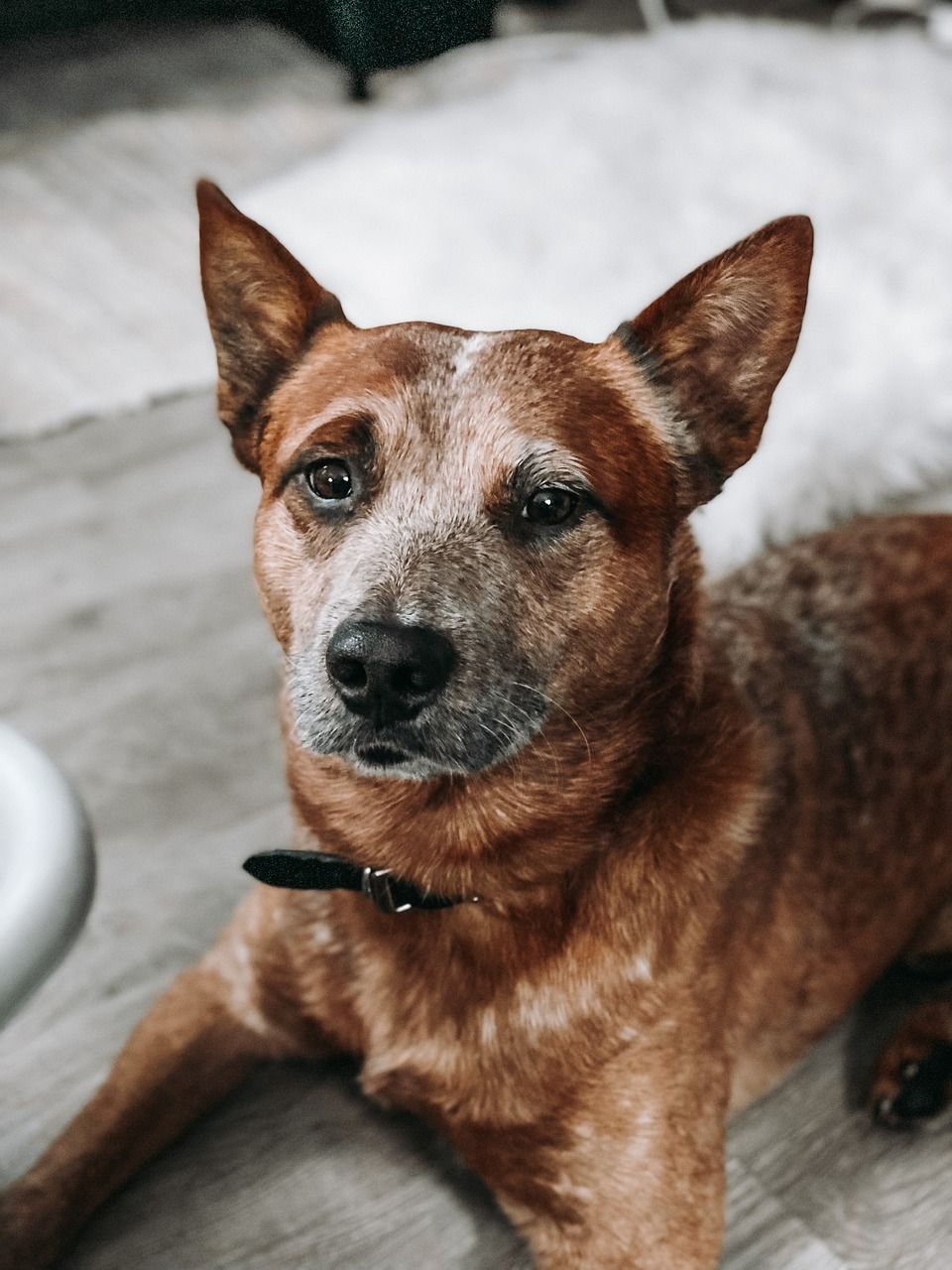Australian Cattle Dogs, often recognized by their other moniker, Blue Heelers, are a unique mix of athleticism, intelligence, and determination. They were originally bred to drive cattle over long distances in the rugged terrains of Australia. But behind those piercing eyes and robust physique, there’s a looming question: do these dynamic dogs like to cuddle?

Understanding the Australian Cattle Dog Temperament
Before diving into their cuddling preferences, it's essential to comprehend the very essence of an Australian Cattle Dog's character. These dogs are not just any average lapdogs. They’re high-energy, intelligent, and often very independent.
While many breeds showcase their affection through licks, tail wags, and yes, cuddles, the Australian Cattle Dog has a slightly different approach. Their primary instinct is to work and to be constantly engaged. This inherent need to herd, combined with their independent nature, might lead one to believe they aren’t the cuddliest of breeds.
So, Do They Cuddle?
The short answer is: it depends. Not all Australian Cattle Dogs are the same, and much like humans, they have individual personalities. Some might love to cozy up next to their owners after a long day, seeking warmth and comfort. Others might prefer their personal space, content with just being near their human without the need for physical contact.
However, the environment in which they are raised and the bond they share with their humans play a vital role. An Australian Cattle Dog raised in a loving, affectionate environment, where physical touch is encouraged, is more likely to enjoy cuddles compared to one that isn’t.
Factors Influencing Cuddling Behavior
Training and Socialization
An essential element in determining whether an Australian Cattle Dog becomes cuddly is its training and socialization from puppyhood. Exposing them to various people, pets, and environments can make them more adaptable and receptive to affection.
Owner's Personality
Dogs, in general, are known to mirror their owner's personalities to some extent. If the owner is affectionate and encourages cuddling, the dog might reciprocate those feelings. On the flip side, if the owner is distant or doesn't engage in physical affection, the dog might be the same.
Dog's Individual Personality
It's crucial to remember that every dog is an individual. While breed tendencies do play a role, the dog's own personality can be a more significant determinant. Some dogs are just more tactile and affectionate by nature.
The Right Moments for Affection
While Australian Cattle Dogs might not always initiate a cuddle session, there are times when they might be more receptive to it:
- After Physical Activity: After a long day of play or work, when they're tired and winding down, they might be more inclined to seek out affection.
- Cold Days: Seeking warmth during chilly weather is a natural instinct for many animals, and your Cattle Dog might just snuggle up closer to you during those times.
- During Stress: Just like humans, dogs seek comfort during stressful situations. Whether it's thunderstorms or a trip to the vet, your dog might find solace in your embrace.
The Myths Surrounding Australian Cattle Dog Affection
Over the years, several myths have sprung up around the Australian Cattle Dog and their display of affection. Let’s debunk a few:
Myth 1: They are Aloof with Strangers
While it's true that Australian Cattle Dogs can be wary of strangers, this doesn't necessarily mean they are aloof or unfriendly. They are protective and might take time to warm up to new people. However, once they sense no threat, many are quite amiable and may even engage in playful behavior.
Myth 2: Cattle Dogs Aren't Suitable for Families
Some believe that because of their high energy and independent nature, Australian Cattle Dogs aren't fit for families, especially those with children. This isn't entirely accurate. While they do have a lot of energy, with proper training and socialization, they can be wonderful family pets. Their loyalty can extend to every family member, and they can form strong bonds with children.
Myth 3: They Only Care About Working
Yes, they are working dogs. But no, that doesn’t mean they only care about herding and tasks. Beneath that working exterior, they have a heart that craves connection. The bond they form with their primary caregiver is intense, and they can be quite sensitive to their owner's emotions. While they might not always show it in a typical ‘cuddle’ fashion, their loyalty and dedication are unparalleled forms of affection.
Harnessing Their Energy for Bonding
If you're looking to strengthen your bond with your Australian Cattle Dog and, perhaps, increase those cuddling moments, here are some tips:
Engage in Play
Australian Cattle Dogs have a lot of energy. Channeling that energy into play sessions can be a great way to bond. Whether it's a game of fetch, tug-of-war, or agility training, spending quality time playing can foster a closer relationship.
Training Sessions
Investing time in training sessions not only helps in discipline but also strengthens the bond between the dog and the owner. Positive reinforcement techniques can be especially effective. Every time they get a command right and are rewarded, it reinforces their trust and affection towards you.
Consistent Affection
Being consistent with your affection can help in making your Australian Cattle Dog more receptive to it. Regular petting, kind words, and yes, attempted cuddles, can slowly but surely make them more accustomed to such displays of love.
Delving Deeper: What Science Says About Canine Affection
To truly understand the cuddling tendencies (or lack thereof) of Australian Cattle Dogs, we can turn to science for some insights. Studies on canine behavior offer a glimpse into the intricate world of dog-human interactions.
Oxytocin: The Love Hormone
Oxytocin, often termed the "love hormone," plays a significant role in bonding and social interactions in many species, including dogs. When dogs and humans interact positively, such as during a cuddling session, both parties experience a rise in oxytocin levels. While Australian Cattle Dogs may have their independent streak, they are not immune to the effects of oxytocin. This means that even if they're not the biggest fans of traditional cuddling, they still derive emotional satisfaction from positive interactions with their humans.
Social Learning and Affection
Dogs are adept social learners. They observe, process, and often mimic the behaviors they see. An Australian Cattle Dog that sees other dogs in the household engaging in cuddly behavior with humans might be more inclined to try it out themselves. Essentially, their environment can influence their affectionate behaviors.
The Role of Early Experiences
Just as with many Australian dog breeds, the temperament and behavior of Australian Cattle Dogs are significantly molded by their experiences during their formative years. These early encounters, whether positive or negative, play a pivotal role in determining their reactions, habits, and even vocal tendencies later in life.
It's essential to understand that while genetics does influence certain traits, the environment in which they're raised, the training they receive, and the socialization opportunities they're exposed to, are equally crucial. This is especially true for Australian Cattle Dogs, who, like other Australian dog breeds, thrive on positive reinforcement and consistent training from a young age.
Puppyhood Interactions
The interactions an Australian Cattle Dog puppy has during its formative weeks can set the tone for its future behavior. Puppies that are handled regularly, exposed to gentle touch, and involved in positive human interactions are more likely to grow up to be dogs that appreciate and seek out physical affection.
Socialization Windows
There are critical windows in a puppy's life where socialization can significantly impact its future behaviors and temperament. For Australian Cattle Dogs, being introduced to a variety of people, environments, and other animals during these windows can make them more adaptable and possibly more affectionate as they mature.

The Emotional World of the Australian Cattle Dog
At their core, Australian Cattle Dogs are deeply emotional creatures. Their loyalty, dedication, and drive to please their owners are testaments to their profound emotional capacities. While they might express their affection in nuanced ways, it doesn't make their love any less genuine.
The Spectrum of Canine Affection
Affection in dogs, much like in humans, is a spectrum. It’s not just about cuddling or physical closeness. Let’s explore the myriad ways in which Australian Cattle Dogs, and dogs in general, express their love and attachment.
Tail Wagging
- Direction Matters: A wag to the right often signifies positive feelings, while a wag to the left can indicate uncertainty or apprehension.
- Speed and Motion: A rapid, full-bodied wag is typically a sign of happiness and excitement.
Vocal Expressions
- Happy Barks: Short, sharp barks, especially during play, can indicate joy.
- Whining: This can be a sign of longing or wanting attention. When done in a positive context, it’s an expression of desire for closeness.
Eyes and Gaze
- The "Love Gaze": Dogs, including Australian Cattle Dogs, can engage in mutual gazing with their owners, which, like cuddling, leads to an increase in oxytocin.
- Blinking: Slow blinking can be a sign of trust and relaxation in the company of their owner.
Cattle Dog Quirks: Unique Signs of Affection
Australian Cattle Dogs, with their distinct personality, often showcase some quirky signs of affection that may not be immediately obvious to the untrained eye.
Herding You
Given their herding background, sometimes, their way of showing love is by trying to herd you! It's not them being bossy but rather their instinctual way of keeping their "pack" together.
Nudging or Pawing
Some Australian Cattle Dogs will gently nudge or paw at their owners to get attention. This subtle tap can be their way of saying, "I'm here, and I want some love!"
Following You Around
Ever felt like you have a shadow? Australian Cattle Dogs often love to be wherever their human is. It's not about being nosy; it's about being close to you.

Cultivating Affection: Tips for Owners
To foster and enhance the bond with your Australian Cattle Dog, and perhaps increase those moments of affection, here are some proactive steps owners can take:
Positive Reinforcement
Always reward good behavior. It not only trains them but also reinforces their trust in you. Negative reinforcements can strain the bond and make them wary.
Interactive Toys
Engage their sharp minds with toys that challenge them intellectually. They can be a great way to engage in playful physical contact.
Regular Vet Check-ups
- Health and Behavior: Sometimes, a lack of affection or a change in behavior can be health-related. Regular check-ups ensure they’re in the best shape.
Australian Cattle Dog: A Legacy of Loyalty
Originating from Australia, these dogs have a legacy rooted in hard work, intelligence, and dedication. Their loyalty is legendary. When they bond, they bond deeply, often choosing a primary human to attach to.
A Lifetime Companion
For those lucky enough to be chosen by an Australian Cattle Dog as their primary human, the journey is one of unwavering companionship. They'll be your shadow, your protector, and your biggest cheerleader.
Recognizing Their Loyalty
While they may not always be the traditional lap dog, cuddling up at every opportunity, their forms of affection are numerous. From the way they greet you after a long day to the protective stance they take when they sense you're in danger, their loyalty and love are ever-present.
Conclusion:
In understanding the affectionate nature of Australian Cattle Dogs, it's crucial to recognize the spectrum of their expressions, from tail wagging and mutual gazing to their instinctual herding behavior. Their early experiences play a pivotal role in shaping their affectionate responses, while proactive training fosters deeper bonds. The Australian Cattle Dog's legacy is one of unwavering loyalty, with their forms of affection spanning beyond traditional cuddling. Celebrating and understanding these unique bonds not only enhances the human-canine relationship but also highlights the profound love and dedication inherent in these dynamic dogs.
In understanding the affectionate nature of Australian Cattle Dogs, it's crucial to recognize the spectrum of their expressions, from tail wagging and mutual gazing to their instinctual herding behavior. Their early experiences play a pivotal role in shaping their affectionate responses, while proactive training fosters deeper bonds. The Australian Cattle Dog's legacy is one of unwavering loyalty, with their forms of affection spanning beyond traditional cuddling. Celebrating and understanding these unique bonds not only enhances the human-canine relationship but also highlights the profound love and dedication inherent in these dynamic dogs.
Frequently Asked Questions (FAQs)
- Are Australian Cattle Dogs affectionate pets?
- Yes, Australian Cattle Dogs are affectionate, though they may express their affection in ways other than traditional cuddling. They showcase their love through herding, nudging, following their owner, and displaying loyal behavior.
- Do Australian Cattle Dogs like to cuddle?
- While Australian Cattle Dogs are not always known as traditional lap dogs, many enjoy cuddling. Their preference for cuddling can depend on their personality, early experiences, and training.
- How do Australian Cattle Dogs express their affection?
- Apart from cuddling, they might lean into you, bring toys as an invitation to play, engage in mutual gazing, or give gentle licks. Tail wagging, relaxed ears, and body posture indicate their affectionate state.
- What role does oxytocin play in canine affection?
- Oxytocin, often called the "love hormone," is associated with bonding and social interactions. Both dogs and humans experience increased oxytocin levels during positive interactions, leading to feelings of closeness and affection.
- How can early life experiences impact an Australian Cattle Dog's affectionate behavior?
- Puppies that are handled regularly, exposed to gentle touch, and involved in positive interactions are more likely to grow up into dogs that appreciate and seek out physical affection. Critical socialization windows during puppyhood also play a significant role in shaping their temperament and behaviors.
- How can owners cultivate a deeper bond with their Australian Cattle Dog?
- Owners can foster a deeper bond by using positive reinforcement, engaging with interactive toys, respecting their dog's boundaries, and ensuring regular vet check-ups to address any health or behavioral concerns.
- Are Australian Cattle Dogs loyal to their owners?
- Yes, Australian Cattle Dogs are known for their legendary loyalty. Often, they form a deep bond with a primary human, offering unwavering companionship and protection.
- Do training and consistency affect an Australian Cattle Dog's affectionate responses?
- Absolutely. Consistent training based on trust and positive reinforcement can enhance the bond between the dog and owner, leading to more affectionate interactions.
- What are some unique affectionate quirks of Australian Cattle Dogs?
- Some quirks include trying to herd their humans, nudging or pawing for attention, and following their owner around, acting as a constant shadow.
- Why is it essential to recognize the diverse ways dogs express affection
- Understanding the spectrum of canine affection ensures that owners can recognize, appreciate, and reciprocate their dog's unique expressions of love, leading to a stronger and more fulfilling bond.






